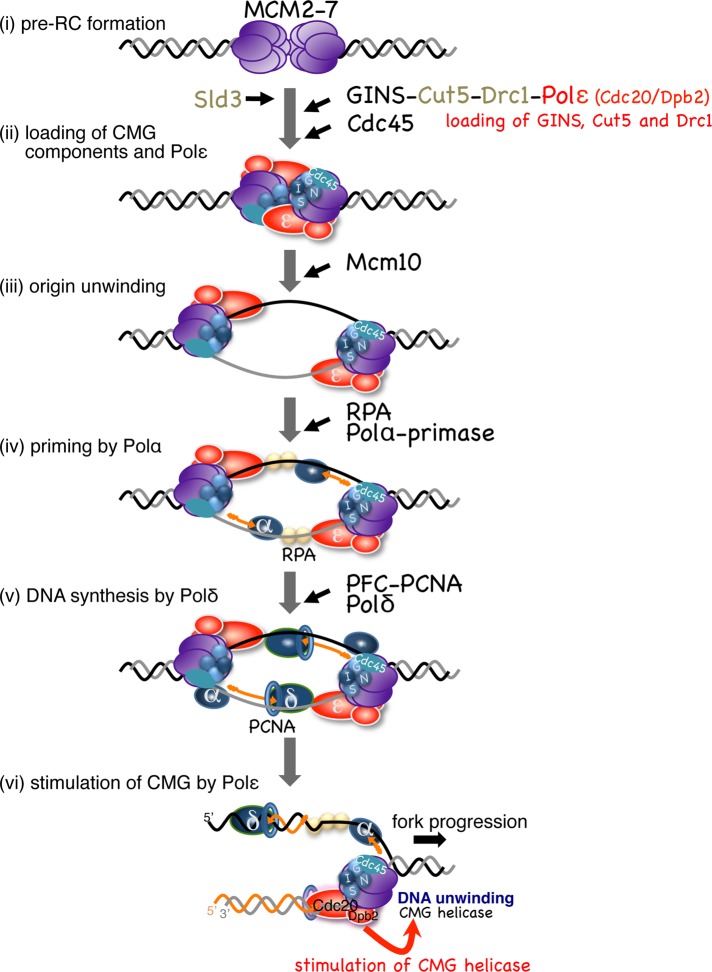FIGURE 8:
Requirement of Pol ε from initiation through elongation of DNA replication. A model of assembly and progression of the replisome in fission yeast is presented. (i) In G1-phase, the double-hexameric Mcm2-7 is loaded onto the origin, forming pre-RC. (ii) At the onset of S-phase, Sld3 is loaded onto pre-RC, depending on DDK, and then the CMG components, GINS and Cdc45, are recruited with the aid of Sld3, Cut5, Drc1, and Pol ε. In this step, Pol ε binds to the origin in a manner mutually dependent on GINS, Cut5, and Drc1. (iii) After assembly of the CMG components and Pol ε, Mcm10 plays an essential role in origin DNA unwinding catalyzed by the CMG helicase (Kanke et al., 2012). On activation of the helicase, Pol ε continues to associate with the CMG helicase that translocates on the leading-strand template. (iv) RPA is loaded onto the single-stranded DNA, and then Pol α-primase initiates DNA synthesis. (v) Pol δ is recruited onto the primed-template DNA with the aid of RFC and PCNA (RFC is not shown for simplicity) to extend nascent DNA strands. (vi) When Pol δ collides with Pol ε, Pol ε takes over to extend the leading strand. Throughout steps (iii)–(vi), Cdc20 and Dpb2 may associate with the CMG helicase and stimulate its progression.

